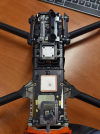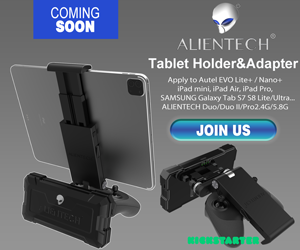gschulzuio
Well-Known Member
- Joined
- Dec 14, 2020
- Messages
- 727
- Reaction score
- 373
Couple of items (note this applies to USA & FAA):
1. RID dates are for manufacturers compliance September 2022, for operators September 2023.
2. There will be external modules that will be attachable to existing aircraft/drones/rc's etc.
3. For hobby/recreational (e.g. 44809) aircraft that are registered (e.g. > .55 lbs) you will need a module for existing aircraft(s). Note that for 44809 aircraft under <= .55 lbs do not need registration and done need RID at this point in time.
4. For part 107 registered aircraft (e.g. regardless of weight < 55 lbs) you will need one module per aircraft for existing aircraft that do not support RID once implemented. Note that for 107 there is a unique registration per aircraft, thus a unique RID per aircraft vs. for hobby/44809.
5. Some newer existing aircraft may support RID with a fw/sw update, which ones and how is TBD.
6. For aircraft/drones/etc that do not fit into the above scenarios, then those would be limited to flying in a FRIA.
7. No internet or cellphone connection should be required for RID broadcast modules.
8. Only your registration number is tied to your RID, note that you may need to add a phone number to your registration in the future.
9. We should start seeing external RID modules for the US appearing over the next year or so once all of the standards and backend details are flushed out.
10. Likewise we should start seeing statements from manufacturers of how existing and new aircraft will be supported over the next year or so. Also watch for declarations of compliance (DoC) from manufacturers on how they can meet various Operating Over People (OOP) categories with their aircraft.
So a question to ask is not if your aircraft/drone will be supporting or capable of RID two plus years from now in September 2023, instead, will you still have the same aircraft and will it be usable even without RID?
1. RID dates are for manufacturers compliance September 2022, for operators September 2023.
2. There will be external modules that will be attachable to existing aircraft/drones/rc's etc.
3. For hobby/recreational (e.g. 44809) aircraft that are registered (e.g. > .55 lbs) you will need a module for existing aircraft(s). Note that for 44809 aircraft under <= .55 lbs do not need registration and done need RID at this point in time.
4. For part 107 registered aircraft (e.g. regardless of weight < 55 lbs) you will need one module per aircraft for existing aircraft that do not support RID once implemented. Note that for 107 there is a unique registration per aircraft, thus a unique RID per aircraft vs. for hobby/44809.
5. Some newer existing aircraft may support RID with a fw/sw update, which ones and how is TBD.
6. For aircraft/drones/etc that do not fit into the above scenarios, then those would be limited to flying in a FRIA.
7. No internet or cellphone connection should be required for RID broadcast modules.
8. Only your registration number is tied to your RID, note that you may need to add a phone number to your registration in the future.
9. We should start seeing external RID modules for the US appearing over the next year or so once all of the standards and backend details are flushed out.
10. Likewise we should start seeing statements from manufacturers of how existing and new aircraft will be supported over the next year or so. Also watch for declarations of compliance (DoC) from manufacturers on how they can meet various Operating Over People (OOP) categories with their aircraft.
So a question to ask is not if your aircraft/drone will be supporting or capable of RID two plus years from now in September 2023, instead, will you still have the same aircraft and will it be usable even without RID?
Last edited:





